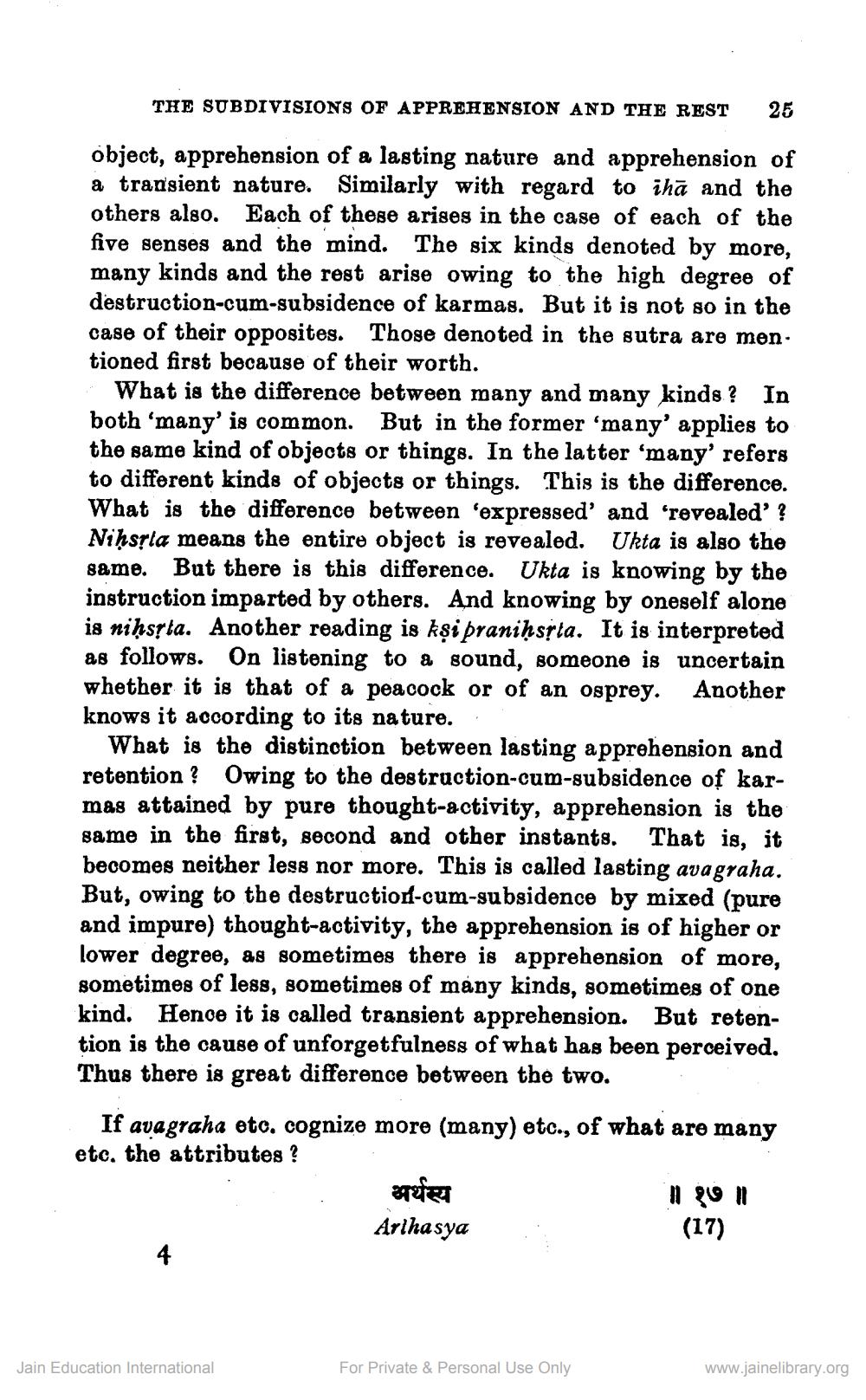________________
THE SUBDIVISIONS OF APPREHENSION AND THE REST 25
object, apprehension of a lasting nature and apprehension of a transient nature. Similarly with regard to iha and the others also. Each of these arises in the case of each of the five senses and the mind. The six kinds denoted by more, many kinds and the rest arise owing to the high degree of destruction-cum-subsidence of karmas. But it is not so in the case of their opposites. Those denoted in the sutra are men. tioned first because of their worth.
What is the difference between many and many kinds? In both 'many' is common. But in the former 'many' applies to the same kind of objects or things. In the latter 'many' refers to different kinds of objects or things. This is the difference. What is the difference between 'expressed' and 'revealed'? Niḥsṛla means the entire object is revealed. Ukta is also the same. But there is this difference. Ukta is knowing by the instruction imparted by others. And knowing by oneself alone is niḥsṛta. Another reading is kṣi praniḥsṛta. It is interpreted as follows. On listening to a sound, someone is uncertain whether it is that of a peacock or of an osprey. Another knows it according to its nature.
What is the distinction between lasting apprehension and retention? Owing to the destruction-cum-subsidence of karmas attained by pure thought-activity, apprehension is the same in the first, second and other instants. That is, it becomes neither less nor more. This is called lasting avagraha. But, owing to the destruction-cum-subsidence by mixed (pure and impure) thought-activity, the apprehension is of higher or lower degree, as sometimes there is apprehension of more, sometimes of less, sometimes of many kinds, sometimes of one kind. Hence it is called transient apprehension. But retention is the cause of unforgetfulness of what has been perceived. Thus there is great difference between the two.
If avagraha etc. cognize more (many) etc., of what are many etc. the attributes ?
4
Jain Education International
arefer Arthasya
For Private & Personal Use Only
॥ १७ ॥ (17)
www.jainelibrary.org




